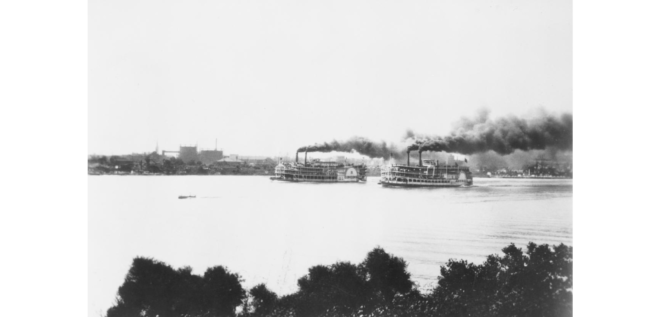“Much the most enjoyable of all races is a steamboat race… Two red-hot steamboats raging along, neck-and-neck, straining every nerve – that is to say, every rivet in the boilers – quaking and shaking and groaning from stem to stern, spouting white steam from the pipes, pouring black smoke from the chimneys, raining down sparks, parting the river into long breaks of hissing foam – this is sport that makes a body’s very liver curl with enjoyment. A horse race is pretty tame and colorless in comparison,” – Mark Twain, in Life on the Mississippi (1883).
Although he certainly had a flair for the dramatic, it is understandable why Samuel Clemens, more famously known as Mark Twain, looked back on steamboat races with such romantic fondness. With risks, rewards, high stakes, and glory aplenty, these races were not merely competitions between boats, but contests of personality between some of the most larger-than-life characters of the Steamboat Era. Indeed, few topics from this area of history remain so firmly ingrained in popular memory. Despite the grandiose and often romantic nature of steamboat racing, however, it was also a phenomenon very much grounded in practical economics, where the potential rewards went hand-in-hand with occasional catastrophe. This article will examine the history behind steamboat racing, from its origins in the early decades of the Steamboat Era through to the modern day. We hope you find it as fascinating a subject as we do!
River travel was one of the primary movers of people and goods in the early United States. Inland rivers served as important arteries for trade and transportation, and were essential to the country’s economic development and expansion. The widespread adoption of steam power in the early 19th century made river travel even more practical and, importantly, profitable. By the 1820s, steamboats were a common sight.
Competition between rival steamboat captains was fierce. Profit was their foremost concern, and there were many strategies for a boat’s owner to maximize their revenue and out-perform others. Chief among these was speed, for a fast boat was a profitable boat. People naturally wanted to travel and move goods on the fastest boat they could, making speed an important tool in attracting customers. This gave steamboat owners a huge incentive to let people know that their boat was the fastest on the river. Newspapers were filled with steamboat company advertisements, all hailing their boats as the fastest on the river. In this context, racing was all but inevitable.
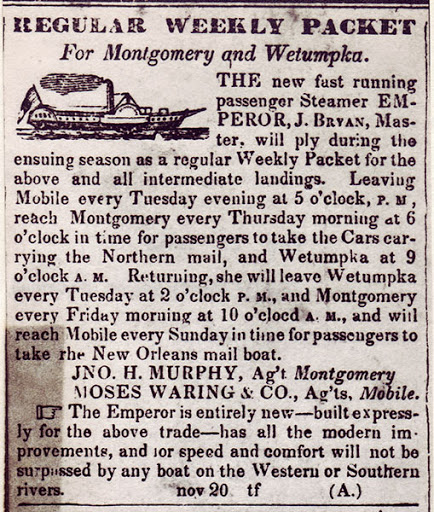
Early steamboat races were informal affairs. Often, the captains of two boats finding themselves on the same stretch of river would spontaneously decide to race each other. They would order their engineer to tie down the safety valve, a device which was designed to relieve pressure above which the boilers could safely handle. Then, the captains would push their boats as fast as they could go in a race to a determined finish line, often the next landing on the river. To the victor went first pick of the landing’s cargo and passengers, a great benefit to a boat’s profitability and prestige.
With great reward came great risk, however. Steamboat racing, especially in the early days of the 1830s and 1840s, was a dangerous sport. Captains and pilots in pursuit of winning a race or setting a new speed record pushed the limits of what their boats could do, and safety was often of secondary concern. Collisions were common during races, as were groundings and snags, but boiler explosions were the biggest danger. Racing placed great stress on a boats’ mechanical components, degrading the quality of the metal in the boilers much faster than occurred through normal use. This was compounded by some captains’ fondness for ignoring safety measures and putting their boats’ boilers under dangerous amounts of steam pressure. All of this created an environment with a higher-than-average chance of explosion.
The results of such explosions were often catastrophic. The explosion of the steamer Moselle on April 25th, 1838, for example, killed more than 130 of the roughly 280 people aboard. Many explosions were even worse. Although Moselle was not racing at the time of her explosion, an investigation into the disaster blamed it on the poor condition of her boilers as a result of unsafe racing and speed practices. Tragedies like the Moselle explosion demanded action, and Congress passed two major Steamboat Acts in 1838 and 1852 regulating river safety. Measures such as the creation of a steamboat inspection service, the licensing of boats, pilots, and engineers, and legal punishments for negligence all helped reduce the risk of disaster. By the 1860s, boiler explosions as a result of racing were significantly less frequent.
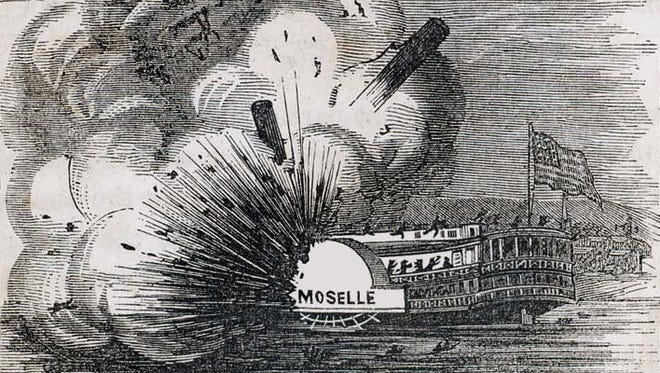
Despite the potential dangers, racing always remained popular. Over time, some races developed from ad hoc challenges into more formal contests. Although spontaneous racing remained more common, pre-planned races attracted by far the most attention. In well-publicized and much-anticipated events, Captains pitted their steamers against each other to determine which boat could achieve the fastest time between cities. Wealthy citizens commonly wagered large amounts of money on these races, sometimes as much as $10,000 for the most well-known boats. Steamboat races were some of the major cultural events of their day, complete with pageantry and fanfare befitting the occasion.
For decades, there was a near-obsession among steamboat captains for setting speed records. Captains were keenly aware of their boat’s reputation, as their own identity was closely linked to that of their vessel. Traditionally, a boat which won a race or set a new speed record received a set of antlers in commemoration of the achievement. Few symbols during the Steamboat Era were more prestigious than a steamboat which “held the horns”. (On the Upper Mississippi above St. Louis, however, a broom symbolizing a “clean sweep” of the river was the mark of the fastest boats). The captains of many of these boats became genuine celebrities, and names like John Cannon and Tom Leathers were well-known up and down the inland rivers. Indeed, the rivalry between these two men led to possibly the greatest steamboat race of them all.
Captain John W. Cannon of New Orleans, Louisiana and Captain Thomas P. Leathers of Natchez, Mississippi both owned and operated steamers across the inland rivers. Although they started as business partners, their partnership did not last, and the two men soon competed with each other for the biggest share of the river trade. This was no friendly competition, however, for the captains soon became bitter rivals who personally despised each other. At one time, their animosity even boiled over into a public fistfight.
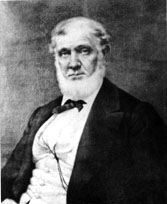
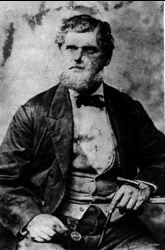
In 1870, Cannon and Leathers were both running fast steamboats out of New Orleans. Cannon’s boat was the Robert E. Lee (abbreviated at the time to Rob’t. E. Lee as the full name would not fit on the wheelhouse, but commonly referred to simply as “The Lee”), built in 1866 at New Albany, Indiana and measuring 285.5’x48’x9′. Leathers’ boat, named after his home city, was the Natchez, built in 1869 at Cincinnati, Ohio and measuring 303’x42.6’x9.8′. Both boats had reputations for speed, and it did not take long until conditions were ripe for a race. Cannon and Leathers were not on speaking terms and therefore could not issue a formal challenge, so the captains indirectly set the race up by scheduling both boats to depart New Orleans on Thursday, June 30th, the Lee bound for Louisville and the Natchez for St. Louis, the expected finish line. Newspapers widely publicized the race, and anticipation was high.
Both boats left New Orleans early on the evening of June 30th to great fanfare and celebration. Capt. Cannon on the Lee took an early lead, a lead which only grew as Capt. Leathers on the Natchez made periodic stops to take on passengers and fuel. The Lee did not make these stops, however, as Capt. Cannon preferred to take on fuel from barges and from other boats while still underway. By the time they reached the important river town of Memphis, Tennessee, the Lee was a little over an hour ahead. Cannon’s lead was further increased as Capt. Leathers on the Natchez encountered a run of bad luck. The boat’s cold water pump broke down at Vicksburg, Mississippi, costing 33 minutes in repair time, and she was then stuck in heavy fog below Bainbridge, Missouri for nearly six hours.
The Lee suffered no such delays. She arrived at St. Louis at 11:14 on the morning of July 4th, 1870, more than six hours ahead of the Natchez. Capt. Cannon had won, and he set a new speed record between New Orleans and St. Louis of three days, eighteen hours, and fourteen minutes in the process.
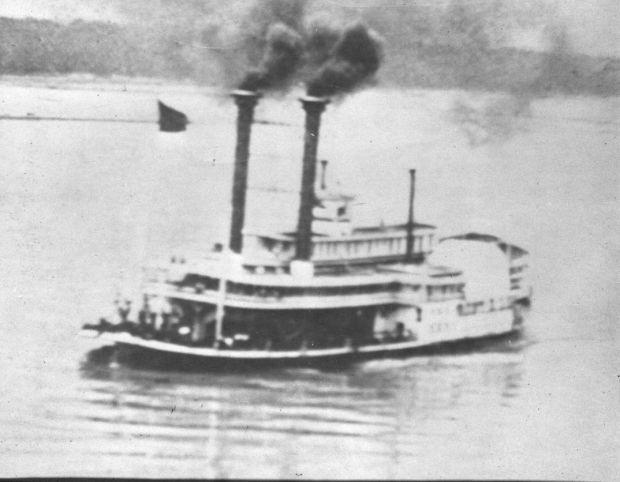
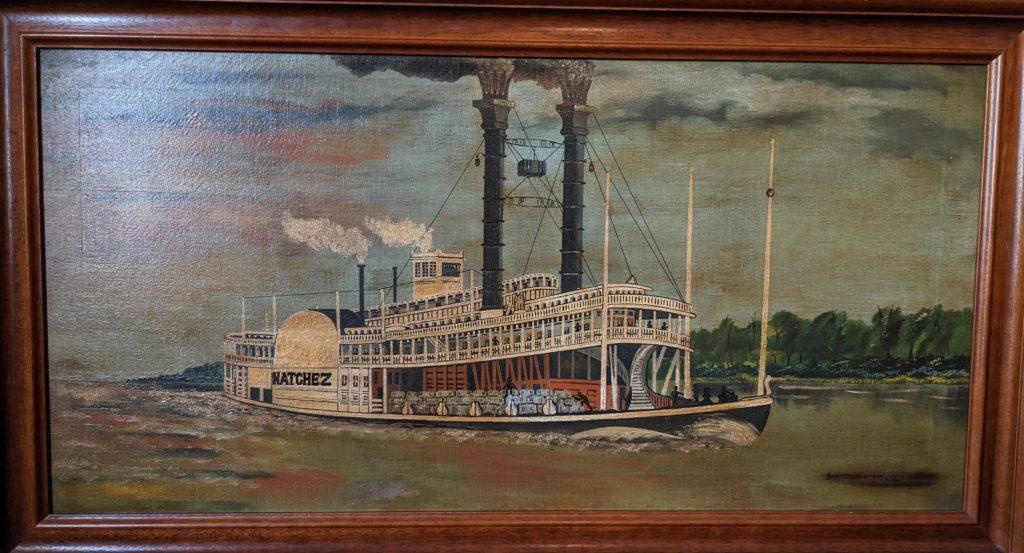
Or had he? Although the Lee’s overall runtime was indeed shorter than that of the Natchez, determining the race’s true winner is not necessarily so clear-cut. The Natchez lost a total of seven hours and one minute in stops, whether intentional or otherwise. This made her actual running time twenty-eight minutes shorter than that of her opponent. Supporters of Capt. Leathers and the Natchez never accepted the victory of Capt. Cannon and the Rob’t E. Lee, and who actually won the race is a debate which continues among steamboat aficionados to this day.
Steamboat racing remained popular long after the heyday of the Steamboat Era had passed. Even well into the 20th Century, it was common for boats to race each other for profit and glory. The race between the Greene Line steamer Chris Greene and the smaller excursion boat Betsy Ann on the Upper Ohio River in July of 1928, where the Chris Greene won despite brilliant piloting from the crew of the Betsy Ann, is a perfect example of this. (Fun fact! The Betsy Ann was owned by Capt. Frederick Way, Jr., the author of two comprehensive directories on packet boats and towboats. These books are invaluable tools for modern researchers).
However, steamboat races could only continue as long as there were steamboats to participate in them. By the late 1920’s, there were relatively few of the big, classic, Mississippi River-style sidewheelers left. The last race between these river giants took place on August 19th, 1928 in Louisville, Kentucky, when the excursion boat America and the packet boat Cincinnati raced each other from the foot of 2nd Street to Rose Island Amusement Park. In a controversial finish, the Cincinnati won by less than half a boat length. Within four years, the America was gone and the Cincinnati had been sold and repurposed.
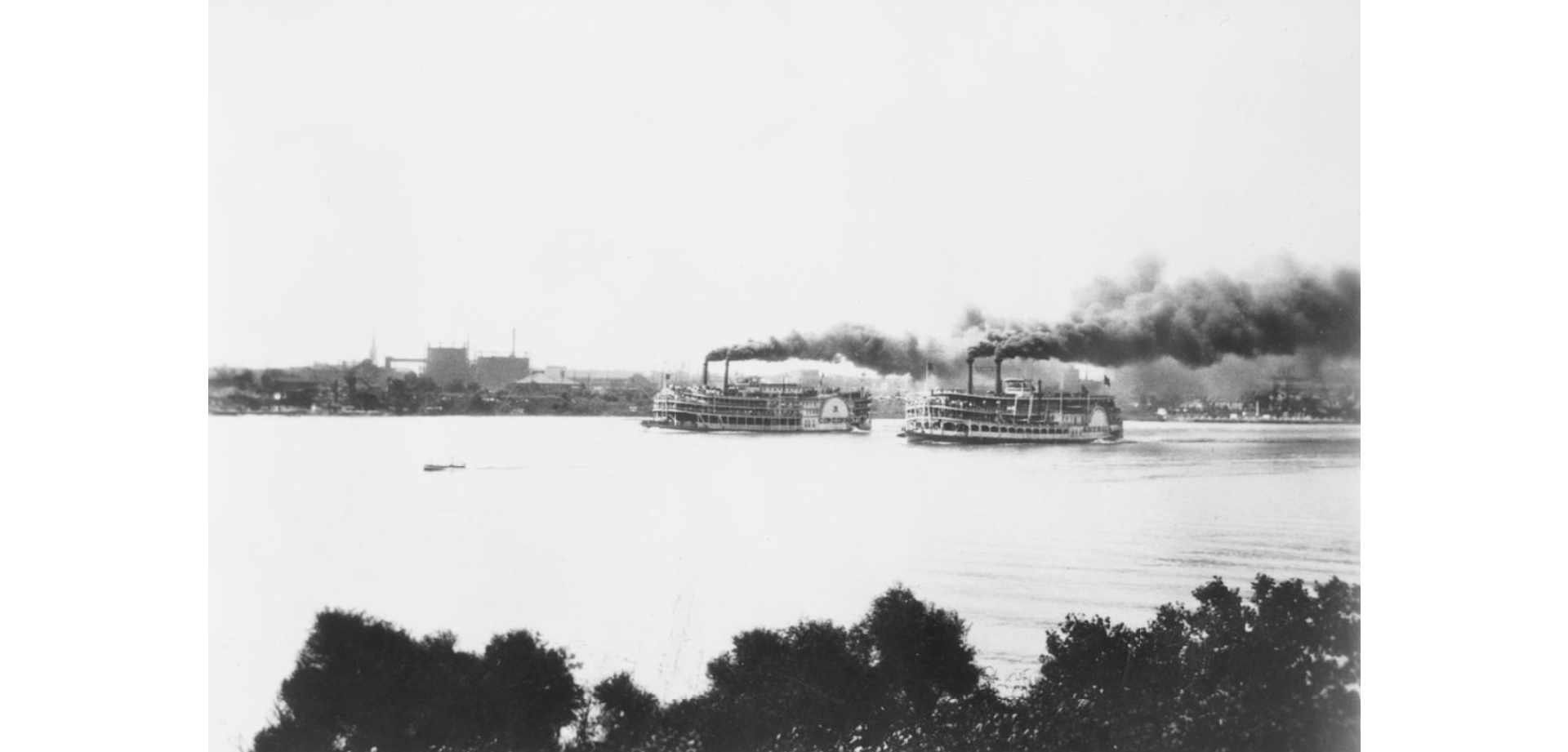
Today, authentic river steamboats of any type or size are a rare sight. However, since 1963 the tradition of racing has been carried on in the Great Steamboat Race in Louisville, Kentucky. Held annually in the weeks leading up to the Kentucky Derby, the race traditionally saw the steamers Belle of Louisville and Delta Queen go head to head in a race for the golden antlers. The two boats were remarkably evenly-matched, and competition was always fierce. In recent years other riverboats (many of them diesel-powered) have replaced the Delta Queen in the race, but the spirit of the tradition remains the same.
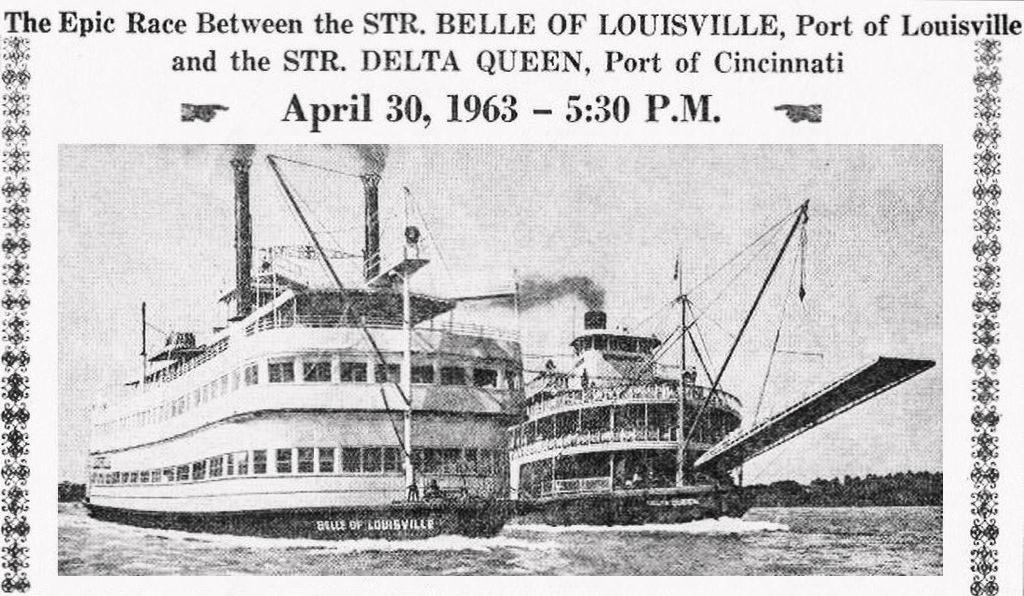
In his 1953 work She Takes the Horns: Steamboat Racing on the Western Waters, Capt. Fred Way, Jr. lamented on the past, the present, and the future of steamboat racing:
“Steamboats are disappearing with alarming rapidity, but races, and talk of races, will go on until the last of the breed is alone. The final couple may develop a rivalry, they’ll race, and then the shade of Captain Cannon will appear in the pilothouse of one, and the shade of Captain Tom Leathers in the pilothouse of the other. If these two ancient hot-heads shake hands after the race is over , there will be a puff of blue smoke, a blinding flash, a mushroom cloud, and the show will be over for all time to come”.
Sources:
Barkhau, Roy L. The Great Steamboat Race Between the Natchez and the Rob’t. E. Lee. Barkhau: USA. 1952.
Engstrom, Kadie. “Steamboat Racing – A Tradition Since the Early 1800s”. (Educational Pamphlet, Historic Belle of Louisville).
Gudmestad, Robert. Steamboats and the Rise of the Cotton Kingdom. Louisiana State University Press: Baton Rouge. 2011.
Fishbaugh, Charles Preston. From Paddlewheels to Propellers. Indiana Historical Society: Indianapolis. 1970.
Hunter, Louis C. Steamboats on the Western Rivers: An Economic and Technological History. Harvard University Press: Cambridge. 1949.
Suess, Jeff. “Our history: Steamboat explosion led to federal regulations”. Cincinnati Enquirer, March 14th, 2018. https://www.cincinnati.com/story/news/2018/03/14/our-history-steamboat-explosion-led-federal-regulations/403819002/
Way, Jr., Frederick. She Takes the Horns: Steamboat Racing on the Western Waters. Frederick Way, Jr: Cincinnati. 1953.
Way Jr., Frederick. Way’s Packet Directory, 1848-1983. Ohio University Press: Athens. 1983.
